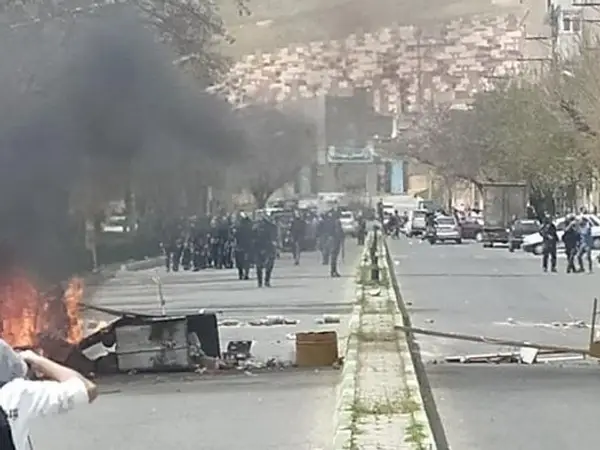Amid intensified measures to enforce hijab laws, Iran's regime is facing a renewed wave of protests over chemical attacks on schoolgirls and economic woes.
According to videos sent to Iran International, people in the Kurdish majority city of Saqqez -- the hometown of Mahsa Amini whose death in the hands of hijab enforcers ignited the current uprising – held a rally with security forces reportedly opening fire to disperse the protesters.
Hengaw, a Norway-based rights group which monitors abuses and violations in Iran’s Kurdish regions, reported that at least six girls’ schools in Saqqez were attacked by the mysterious gas on Sunday, igniting renewed protests against the regime’s inaction or possible involvement in the poisonings. An unknown number of students were sent to hospital following the attacks.
Protesters pulled down the Islamic Republic flag from the top of a school, likely to have been one of the places targeted by the chemical attack. The situation in the city is still tense as protesters have set up bonfires on streets and scores of anti-riot forces have been dispatched throughout the city.
There are also reports of another chemical attack at a girls' school in the central city of Esfahan (Isfahan) on Sunday.
On Saturday, 12 schools were targeted in the Kurdish city of Naqadeh, the city of Orumiyeh (Urmia), the city of Ardabil, Haftkal city of southern Khuzestan province, and the city of Pardis in Tehran province. Last week on Monday and Tuesday, at least five girls’ schools were targeted across the country, with reports of hospitalizations.
The attacks coincided with the funeral of a Kurdish child from the city of Kamyaran who was laid to rest in Pashavah village in Kordestan province. The 16-year-old boy, Karo Pashabadi, had been taken to hospital for treatment on March 15 after inhaling poisonous gas after a chemical attack on a school in Tehran, where he was living. At least one other child, 11-year-old Fatemeh Razaei, has died in the attacks which began on November 30 and have taken place in hundreds of schools nationwide.
Close to 300 schools were targeted in the past Iranian year ending in March 20 without any apparent effort by the government to seriously pursue the perpetrators or explain to terrified parents and students what was happening in so many schools. Thousands of students have been affected, mostly girls, with hundreds more hospitalized with symptoms including respiratory distress, numbness in their limbs, heart palpitations, headaches, nausea, and vomiting.
Ordinary Iranians have been suspicious of the involvement of the regime itself, or religious extremists protected by the regime, calling the attacks “state terrorism,” although the regime has denied responsibility and even staged arrests of suspects after widespread protests. Popular belief is that such large-scale and coordinated attacks cannot happen without the green light of the regime’s authorities.
International reaction has demanded answers to the mystery poisonings including a spokesperson for the UN Human Rights Council in Geneva calling for a transparent investigation along with the White House, which demanded accountability for those responsible.
Decrying the attacks, several opposition figures, including Nobel Peace Prize winner and human rights lawyer Shirin Ebadi, exiled prince Reza Pahlavi have emphasized the role of the regime and urged the international community to pressure the regime to provide access for investigations on-the-ground in Iran.
